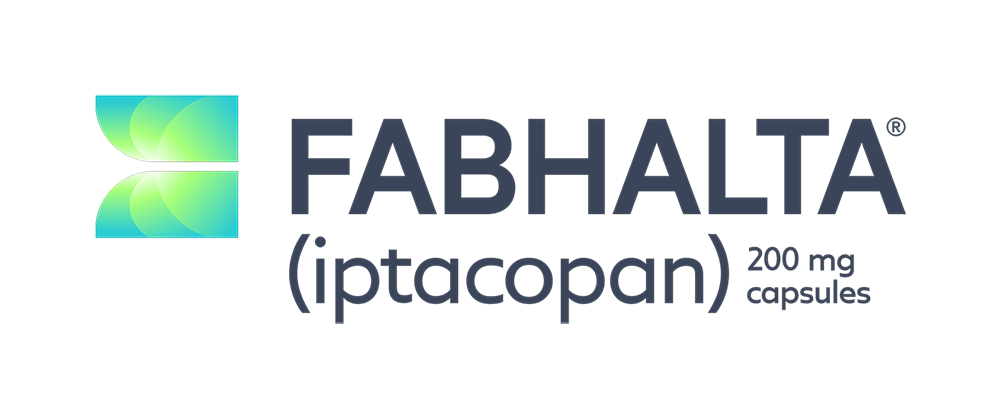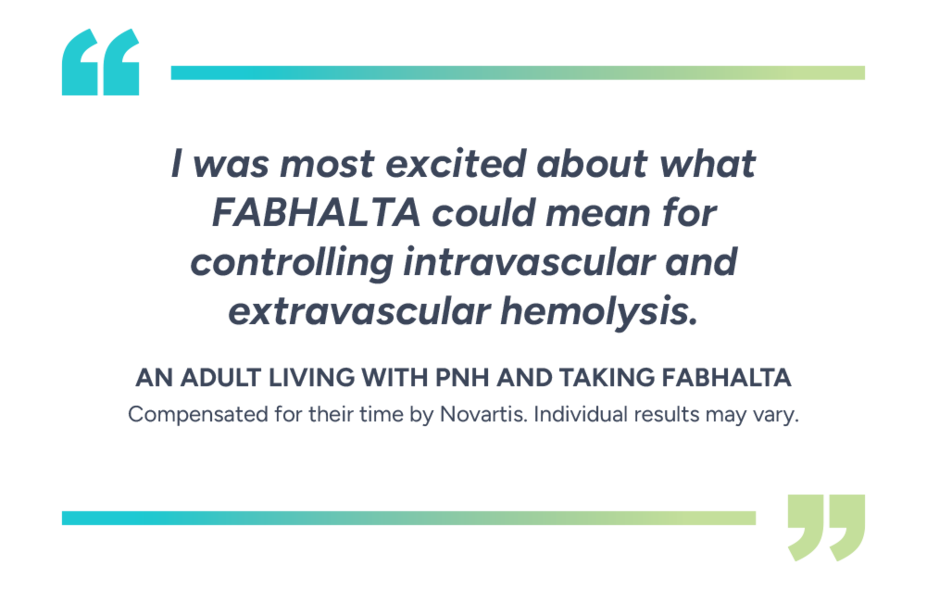Definitions
C5i, C5 inhibitor; EVH, extravascular hemolysis; IVH, intravascular hemolysis; MAC, membrane attack complex; PNH, paroxysmal nocturnal hemoglobinuria; RBC, red blood cell.
References
1. Fabhalta. Prescribing information. Novartis Pharmaceuticals Corp.
2. Dingli D, Matos JE, Lehrhaupt K, et al. The burden of illness in patients with paroxysmal nocturnal hemoglobinuria receiving treatment with the C5-inhibitors eculizumab or ravulizumab: results from a US patient survey. Ann Hematol. 2022;101:251-263. doi:10.1007/s00277-021-04715-5
3. Brodsky RA. Paroxysmal nocturnal hemoglobinuria. Blood. 2014;124(18):2804-2811. doi:10.1182/blood-2014-02-522128
4. Hill A, Rother RP, Arnold L, et al. Eculizumab prevents intravascular hemolysis in patients with paroxysmal nocturnal hemoglobinuria and unmasks low-level extravascular hemolysis occurring through C3 opsonization. Haematologica. 2010;95(4):567-573. doi:10.3324/haematol.2009.007229
5. Notaro R, Luzzatto L. Breakthrough hemolysis in PNH with proximal or terminal complement inhibition. N Engl J Med. 2022;387(2):160-166. doi:10.1056/NEJMra2201664
6. Risitano AM, Marotta S, Ricci P, et al. Anti-complement treatment for paroxysmal nocturnal hemoglobinuria: time for proximal complement inhibition? A position paper from the SAAWP of the EBMT. Front Immunol. 2019;10(1157):1-24. doi:10.3389/fimmu.2019.01157
7. Risitano AM, Notaro R, Marando L, et al. Complement fraction 3 binding on erythrocytes as additional mechanism of disease in paroxysmal nocturnal hemoglobinuria patients treated by eculizumab. Blood. 2009;113(17):4094-4100. doi:10.1182/blood-2008-11-189944
8. Shammo J, Kim J, Georget M, Pattipaka T, Fermont JM. P796: Hospitalization in patients with paroxysmal nocturnal hemoglobinuria: a retrospective analysis of observational study data from the United States. Hemasphere. 2023;7(suppl):e22585a2. doi:10.1097/01.HS9.0000970088.22585.a2
9. Versmold K, Alashkar F, Raiser C, et al. Long-term outcomes of patients with paroxysmal nocturnal hemoglobinuria treated with eculizumab in a real-world setting. Eur J Haematol. 2023;111(1):84-95. doi:10.1111/ejh.1397010
10. Risitano AM, Frieri C, Urciuoli E, Marano L. The complement alternative pathway in paroxysmal nocturnal hemoglobinuria: from a pathogenic mechanism to a therapeutic target. Immunol Rev. 2023;313(1):262-278. doi:10.1111/imr.1313710.1111/imr.13137

